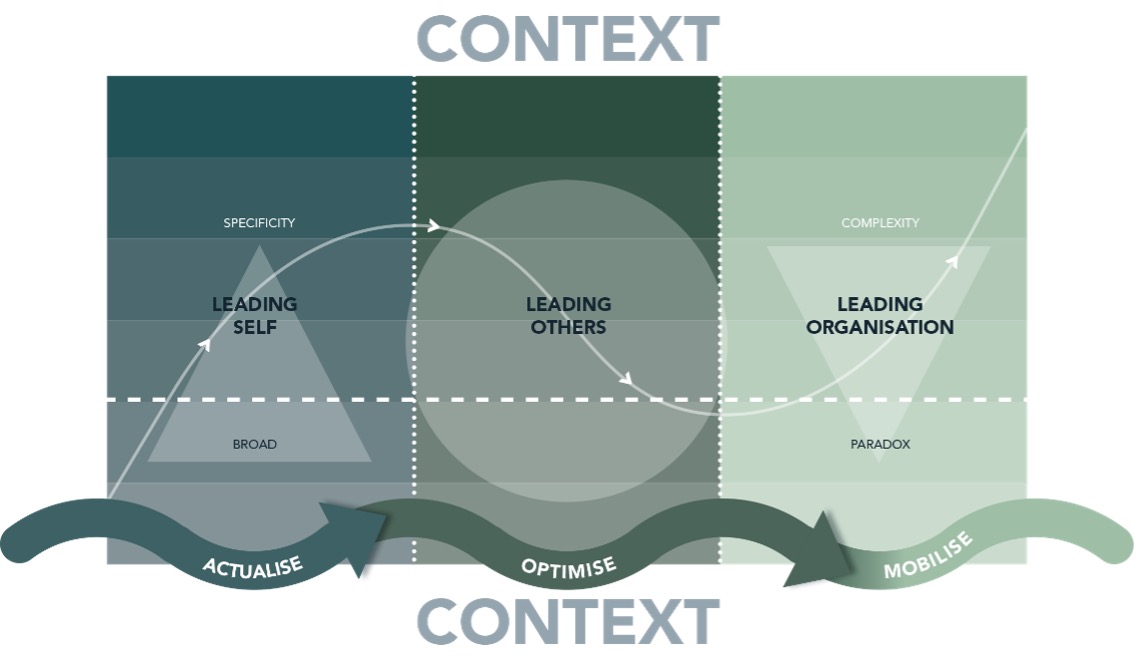Author: Angela Valente
In the fast-paced world of modern business, organisations face relentless pressure to remain competitive. At the heart of this challenge lies a critical task: attracting, developing, and retaining top talent. Yet, many companies grapple with persistent issues—high employee turnover, disengaged teams, and a disconnect between employees’ skills and their roles. Imagine being able to enhance retention and reduce employee turnover by up to 25% (Collins & Smith, 2006), leading to a 17% increase in productivity (Campion, Fink, Ruggeberg, Carr, Phillips, & Odman, 2011) and a 30% boost in engagement (Markos & Sridevi, 2010) through role clarity and targeted development opportunities? What if there was a systematic way to tackle these problems head-on? That’s the power of a well-implemented competency framework.
A short history of the competency framework:
The competency movement began in the 1970s with David McClelland, who challenged the reliance on aptitude tests as indicators of job performance. He argued that these tests were poor predictors and proposed that specific, observable behaviours and termed competencies offered a more reliable measure of success (McClelland, 1973). Over time, this concept gained momentum as organisations intensified their focus on competitive talent management.
Competency Frameworks Explained
This brings us to the question: What is a competency framework? Imagine talent management as an architect; the competency framework is its blueprint. It’s a structured model that outlines the precise knowledge, skills, abilities, and behaviours required for effective job performance. Returning to the blueprint analogy, this framework aligns individual capabilities with organisational goals, bringing clarity and objectivity to hiring, development, and succession planning. Typically, it encompasses:
Core Competencies: Universal skills or traits expected of all employees, such as communication or problem-solving.
Functional Competencies: Role-specific technical abilities, like software proficiency for an IT position.
Behavioural Competencies: Personal qualities that shape performance, such as adaptability or leadership.
Often presented as a hierarchy or matrix, these frameworks are customised to an organisation’s unique needs and applied across all people practices, from recruitment and training to performance evaluation.
Research underscores its value: Organisations using competency frameworks see a 24% improvement in employee performance through:
enhanced role clarity (Bartram, 2005)
a 20% reduction in turnover by aligning talent with organisational needs (Garavan et al., 2012)
a 22% increase in productivity linked to targeted skill development (Aguinis & Kraiger, 2009).
Understanding the value of a clear, structured competency framework led us to develop one of our own—grounded in science and built for real-world decisions.
We designed the JVR Competency Framework to help you make hiring and development choices that are easier, more consistent, and better aligned with what your organisation needs to succeed.
Mapping Talent with Precision
The JVR Competency Framework acts as a strategic road map, defining the skills, behaviours, and knowledge, critical for success at every level—individual, team, and organisational. Think of it as a blueprint for building a high-performing, future-ready work force.
The JVR Competency Framework provides a clear road map with key benefits to any organisation:
Clarity: Identify an inventory of qualities that lead to job excellence.
Behavioural Focus: Describe performance in behavioural and/or capability terms.
Measurable Indicators: Establish well-defined indicators to help recognise when behaviour and/or capability is demonstrated.
Scalability: Identify and set standards across organisational levels.
The result? Employees are empowered to unlock their potential, and businesses are enabled to build a high-performing, future-ready work force. It’s about putting the right people in the right roles—and giving them the tools to grow. A meta-analysis by Sackett and Walmsley (2014) found that structured competency frameworks improve job performance by up to 26%, as it provide employees with clear role expectations and required skills.
Measuring Talent Objectively
Pairing the JVR Competency Framework with psychometric and competency-based assessments brings objectivity to talent management processes. These tools measure how well individuals align with role-specific criteria, uncovering strengths, development areas, and future potential. This data-driven approach enhances hiring, promotions, and succession planning by providing insights into how well individuals match the skills and behaviours needed for success.
The advantages of this approach are significant:
• Improved performance management through clear expectations
• Early identification of high-potential leaders
• Proactive planning for future leadership needs
• Customised training tailored to specific roles
The result? Employees thrive in roles that fit their capabilities, driving engagement and long-term success. Organisations are also enabled to make better decisions, enhance performance, and develop a strong pipeline of leaders prepared for the future. Seibert, Kraimer, and Crant (2001) found that leadership development programs built on competency frameworks increased leadership effectiveness by 29% and improved succession planning efficiency by 34%.
The Evolution of the JVR Competency Framework
Jobs change—and people grow. The JVR Competency Framework takes that into account, helping you match the right behaviours and skills to different stages in a career, from individual contributors to managers and leaders.
The JVR OrgLead Model forms the basis of the JVR Competency Framework and maps the career journey of an individual through an organisation.

The Three Levels Explained
Leading Self: Perfect for individual contributors, this domain focuses on self-management and personal contribution—balancing self-perception with how others see your performance.
Leading Others: For managers, it’s about engaging stakeholders, driving team results, and shaping perceptions of leadership competence.
Leading the Organisation: At the top, leaders influence long-term strategy and competitiveness with high-impact behaviours that cascade through the organisation.
This structure clarifies expectations at every stage, introducing a sophisticated, tiered framework that enables a more refined approach to assessing and developing talent across three organisational levels.
A Holistic Approach with 11 Key Domains
Extensive research was conducted into typical work-related activities, skills, knowledge, and behaviours across roles, levels, and industries. From our research, 11 key themes or domains emerged that ultimately group-related competencies required at different levels.

The JVR Competency Framework groups its 33 competencies into these 11 domains - Connecting, Achieving, Executing, Innovating, Initiating, Responding, Driving, Analysing, Interacting, Relating, and Adapting.
Each domain includes three competencies tied to the 3 distinct organisational levels - Leading Self, Leading Others, and Leading the Organisation.
For example, within the “Adapting” domain, Agility (Leading Self), Implementing Change (Leading Others), and Steering Change (Leading the Organisation) represent the three competencies that reflect the specific focus and responsibilities at each leadership level within this specific domain.
Ultimately, the overarching structure of the JVR Competency Framework provides a comprehensive view of capabilities required for success across various organisational levels, roles, and industries.
Why It Matters
The JVR Competency Framework isn’t just a theoretical model—it’s a customisable tool for nurturing talent, measuring potential, and building a leadership pipeline—all while keeping your business goals in sight. The JVR Competency Framework aligns individual growth with organisational objectives, driving engagement, performance, and strategic success.
By nurturing the right talent in the right way, it drives organisational success today and tomorrow.
Sounds interesting? Let’s connect!
We'd love to hear your thoughts! How do you envision the JVR Competency Framework could enhance your talent strategy?
If you would like us to assist with a COMPLEMENTARY mapping of 1 job profile against our JVR Competency Framework and recommend a fit-for-purpose assessment battery, get in touch with us at consulting@jvrafrica.co.za.
References:
Aguinis, H., & Kraiger, K. (2009). Benefits of training and development for individuals and teams, organizations, and society. Annual Review of Psychology, 60, 451–474. https://doi.org/10.1146/annurev.psych.60.110707.163505
Bartram, D. (2005). The Great Eight competencies: A criterion-centric approach to validation. Journal of Applied Psychology, 90(6), 1185–1203. https://doi.org/10.1037/0021-9010.90.6.1185
(Supports the 24% improvement in employee performance through role clarity.)
Campion, M. A., Fink, A. A., Ruggeberg, B. J., Carr, L., Phillips, G. M., & Odman, R. B. (2011). Doing competencies well: Best practices in competency modeling. Personnel Psychology, 64(1), 225–262. https://doi.org/10.1111/j.1744-6570.2010.01207.x
Collins, C. J., & Smith, K. G. (2006). Knowledge exchange and combination: The role of human resource practices in the performance of high-technology firms. Academy of Management Journal, 49(3), 544-560.
Garavan, T. N., Carbery, R., & Rock, A. (2012). Mapping talent development: Definition, scope and architecture. European Journal of Training and Development, 36(1), 5–24. https://doi.org/10.1108/03090591211192601
Markos, S., & Sridevi, S. (2010). Employee engagement: The key to improving performance. International Journal of Business and Management, 5(12), 89-101.
McClelland, D. C. (1973). Testing for competence rather than for intelligence. American Psychologist, 28(1), 1–14. https://doi.org/10.1037/h0034092
Sackett, P. R., & Walmsley, P. T. (2014). Which personality attributes are most important in the workplace? Perspectives on Psychological Science, 9(5), 538-551.
Seibert, S. E., Kraimer, M. L., & Crant, J. M. (2001). What do proactive people do? A longitudinal model linking proactive personality and career success. Personnel psychology, 54(4), 845-874.
Share this post
Newsletter
Get up-to-date industry news right in your inbox



